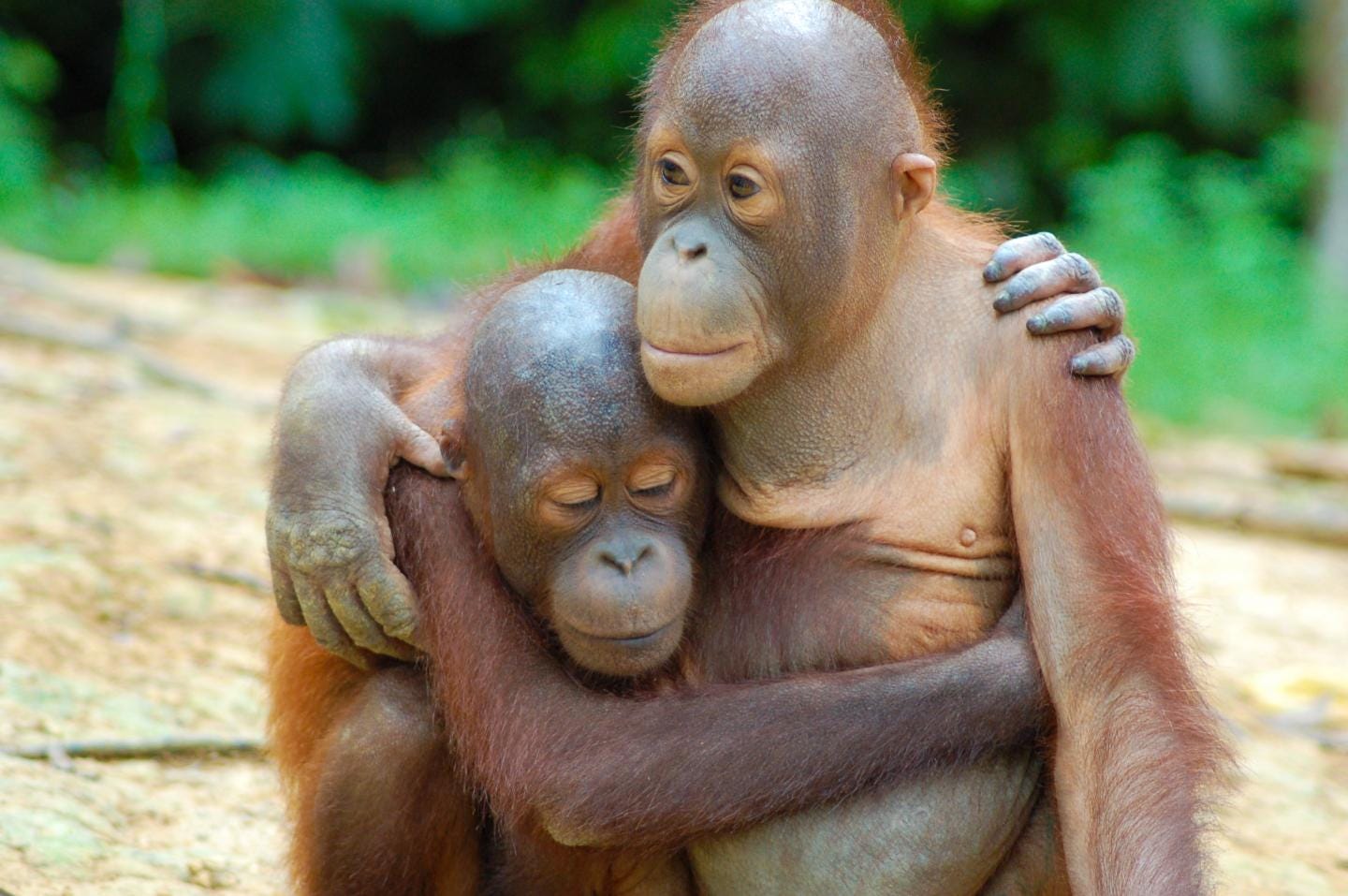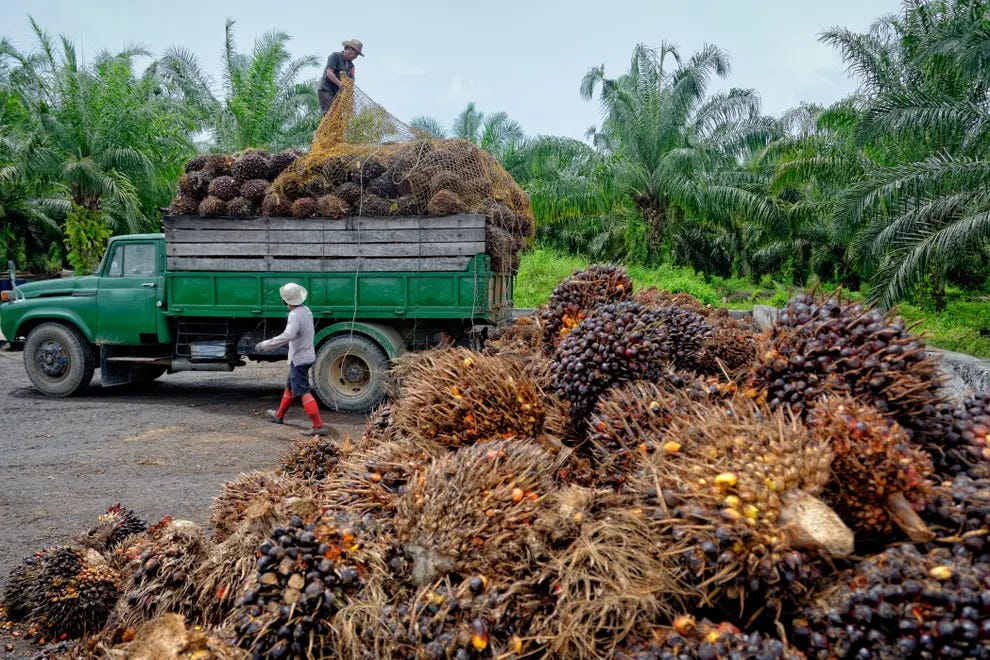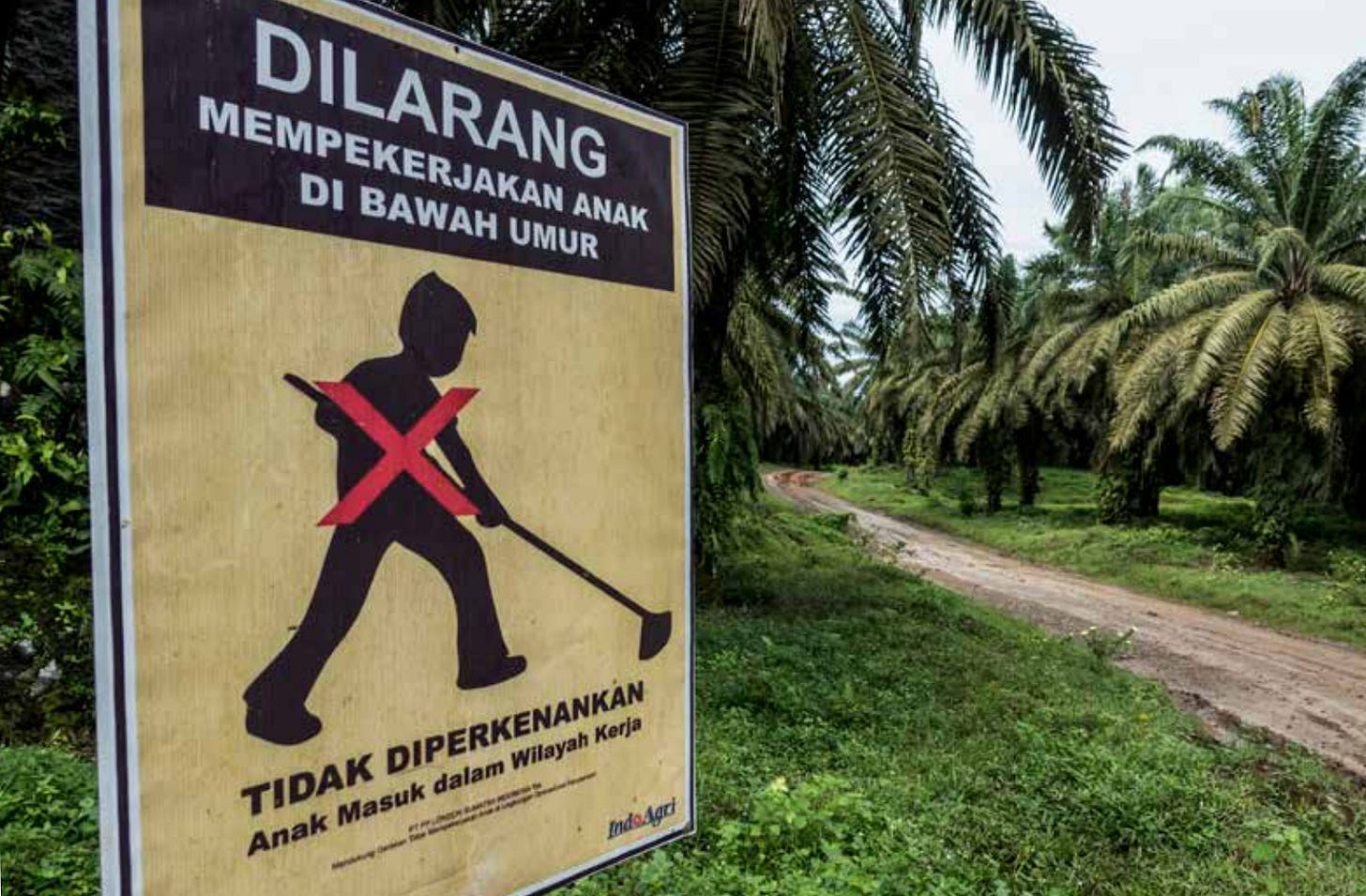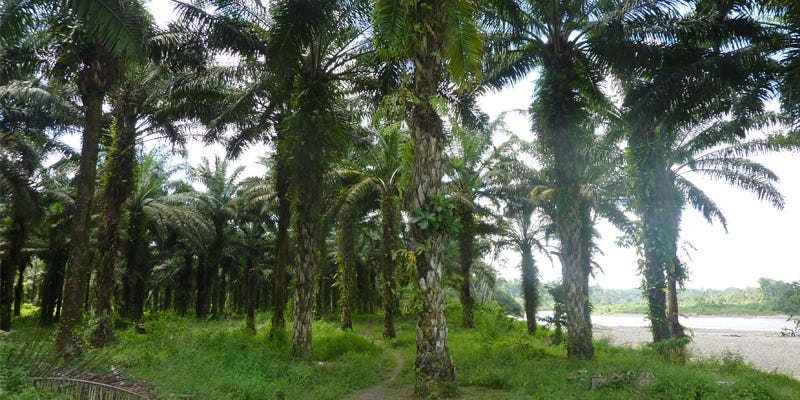Here's a riddle for you:
I am a fruit that goes by many names, mixed with foods to make cookies healthier, junk food crunchier, and stop ice cream from melting. Soap uses me as a cleanser and lipstick wants me to hold color for longer. Even cars use me to help run their engines. What am I?
I'm elaeis guineensis or more commonly known as palm oil.
At a Glance
Like Regina George dominates "The Plastics", palm oil dominates all other oils as the most widely used vegetable oil on Earth.
Palm oil is a $65 billion dollar industry and it's in 50% of consumer goods in supermarkets and cosmetics, making it virtually impossible for anyone to avoid. Listed as an ingredient with over 500 different names, palm oil production is expected to grow from 77 million tons in 2018 to over 107 million tons in 2024.
Consumers love convenience and saving money. To increase demand, producers kept its price low, replacing all types of more expensive oils in personal care products and cooking. It ranks as the most widely adopted cooking oil in Asian and African countries and acts as a decent (and healthier) alternative for butter and other high trans fats.
Palm oil sounds great! So what's the catch? The huge demand results in:
Destruction to thriving rainforest habitat, loss of endangered species, and soil erosion.
Massive initial greenhouse gas production and toxic exposure to pesticides.
Land theft from indigenous people.
Human rights abuse, forced child labor and worker exploitation.
Environmental Cost
Let's take a virtual trip to Indonesia and Malaysia, where 85% of the world’s palm oil is produced.
Here, the government and big industry players run huge plantations, accounting for 10% of permanent global cropland. Covering more than 27 million hectares, around the size of New Zealand, these “green deserts” contain little to no biodiversity, carefully fertilized in grids and protected from pests.
Palm oil trees live for 28 to 30 years and take four years to produce fruits. Each tree produces up to 12 to 20 fruit bunches annually (that's thousands of individual fruits) and will continue to produce for up to 30 years.
Each fruit consists of 50% oil, with the flesh producing palm oil (PO) and the seed producing palm kernel oil (PKO). PO is traditionally used for edible goods like cookies and ice cream, whereas PKO is mostly used for non-edible goods, like soaps and cosmetics, with the exception of the oil used in restaurant cooking.
Because of its high yield and cheap cost, palm oil plantations erupted and as a result, 25 major palm oil producers cleared out rainforest lands by the hundreds of thousands hectares, producing over 300 million tons of carbon emissionssince 2001.
The wonder of these rainforests and peatland is that they held thousands of years of carbon dioxide. By destroying the land, tons of CO2 as far back as the Byzantine era have been released.
Rainforests twice the size of Singapore have been destroyed in the last three years— 40% of which is in Indonesia. Since 2001, Indonesia has lost 25 million hectares of forest, turning the country into a top tier global emitter alongside China and the US. The smoke generated from these fires are estimated to have caused over 100,000 premature deaths, while also putting endangered rhinos, Sumatran tigers, Borneo elephants, and orangutans at risk.
Outside of the destruction created by palm oil production, palm oil is also used for powering cars, emitting 3x the amount of greenhouse gases compared to fossil fuels. 53% of the palm oil used in the EU today goes into making biodiesel for cars and trucks.
Human Cost
Palm oil production and plantations not only burns land, but also lots of bridges, with millions suffering from the loss of land, pollution, and labor intensive work.
Because industry leaders are tearing down lands, indigenous groups, such as the Ibans and Orang Rimba, have lost their traditional forests and livelihoods to palm oil plantations. A story from Leni, a 43 year old Iban Dayak woman, pretty much sums it up:
Before our lives were simple, not rich, but enough. Since oil palm came there is more suffering. I can’t feed my family. I have a baby. I must put food on the table every day. How do I do that when both of us [my husband and I] are not working. Every day I must figure out how to do this.
A decade and a half ago, lush forests with evergreen fruit-bearing rambutan trees surrounded Leni’s home. Currently, indigenous folk have little land to farm and no forest to forage after the land was cleared to make way for an oil palm plantation run by an Indonesian company.
The rivers near the plantations that people rely on for drinking, fishing, and household chores are becoming more polluted due to increased soil erosion, fertilizers, and pesticides. This makes water undrinkable, and fishing virtually impossible (as the fish have died), leaving people in abject poverty.
On the plantations themselves, human trafficking and modern day slavery are common amongst the 3.5 million workers. Workers struggle to survive and sustain their families as plantation owners pay them little to no wages ($2.50 a day). Producers usher financial punishments when employees make mistakes or fail to meet arbitrary work targets, and laborers admit they need their children and spouses to join them in the fields to meet targets for work to avoid these financial consequences.
Children involved in palm oil production are made to carry large loads of heavy fruit, weed fields, and spend hours every day bent over collecting fruit from the plantation floor. Heat exhaustion as well as cuts and bruises from climbing thorny palms are commonplace.
To avoid being culpable for profiting from child labor, companies do not officially recognize children as laborers and the children receive little or no pay for their grueling work. Companies also put up signs "prohibiting child labor".
With Covid-19, hundreds of workers have been laid off across different palm oil plantations, instead hired as casual workers that do not receive health benefits. Those that remain to work handle the additional burden of work, in fear that they will be laid off themselves.
The Future of Palm Oil
Because of palm oil’s prevalence in everyday products, experts say it is probably too late for us to remove it entirely. A UK supermarket, "Iceland", tried to cut palm oil from its brand food only to realize it was impossible. Iceland instead just removed its branding from food that contained palm oil. Check out this cute ad though.
Some groups like C16 Biosciences are working on potential alternatives, but this synthetic palm oil hasn’t scaled up enough to challenge the palm oil industry. Others are trying to make direct substitutes, mixing in other ingredients to make an oil, with not too much luck.
But palm oil itself isn’t necessarily a bad thing! Palm oil is vital to the products we use and how we use them. Rather than cancelling palm oil altogether, groups are advocating to produce in a more responsible manner that can benefit the environment and communities it grows in.
Here are some changes governments and advocates are pushing for:
Obtaining agreements from large palm oil industry leaders for zero-deforestation and zero-exploitation plans. However, most plans are unclear on how to hold these companies accountable and often lead to poor execution.
Adding labeling laws to spot palm oil on ingredient lists and banning palm oil from biodiesel. The EU, U.S., and other governments have made some effort here.
Introducing labels and scoring to help identifypalm oil free or sustainable palm oil.
Improve consistent sustainability auditing to provide more trust behind the labeling process.
Big palm oil leaders are trying to make changes by:
Committing to no deforestation, no peat development, and no exploitation. (NDPE)
Requiring all supply chains to stop burning land, assessing land for high conservation value, and obtaining land use permission.
Re-use old plantation land for palm oil tree production, with smarter agriculture and higher biodiversity.
Increasing transparency and reporting on deforestation and labor to cooperate with import governments.
Improve waste management and composting to reduce methane gases on plantations.
Obtain certification from RSPO to maintain their sustainability. Critics do note that the RSPO, founded by palm oil industry leaders, fails to clearly define and is not strict enough on sustainable labeling, with additional reports of corruption.
While many palm oil leaders state they will make these changes to stop deforestation and worker exploitation, many have failed to produce adequate results including Colgate-Palmolive, General Mills, Hershey, Johnson & Johnson, Kellogg’s, Kraft Heinz, L’Oreal, Mars, Mondelez, Nestlé, PepsiCo, P&G, Wilmar International, and Unilever. Check out the links for each company’s shortcomings.
Ingredients and Alternatives
Lauran Bosworth Paine is famous for publishing western novels. Because his publishers limited how many books an author can publish, he had 70 pen names. If that's a lot to keep track of, we're not sure how we'll keep track of the 500+ derivatives for palm oil.
Luckily, most palm oil derivatives use the same “building blocks” in their names: palm, stear, laur, and glyc. If you can find these root words in your ingredients, it can help you spot a potential likelihood that this ingredient was derived from palm oil.
In addition, there are several groups that exist to help you figure out what ingredients are derived from palm oil so you don’t have to go looking for yourself. Check out the groups below to ctrl+f ingredients in products you use and see if they are a palm oil derivative:
Normally we’d also like to list out some alternatives you can check out, but because palm oil lives in so many different products, we’ve decided to list out the types of products for you to investigate if they have palm oil in them. Some sites for you to check out sustainable/ethical palm oil or palm oil free products are Ethical Consumer and Products Without Palm Oil.
Here are some products you can investigate:
Cleaning: deodorant, detergent, household cleaners, shampoo, conditioner, shaving gel, soap, toothpaste.
Cosmetics: lipstick, makeup, perfume, skincare, sunscreen.
Food: bread, cereal, chocolate, cookies, cooking oil, junk food, ice cream, instant noodles, margarine, pet food, pizza dough.
Other: biodiesel, candles.
What You Can Do
Now that you’re riled up about the consequences behind palm oil, here’s a list of some things you can do. Small changes make big impacts.
Reduce processed food. Most processed food contains palm oil, so avoid that bag of chips when you can.
Track what products you use that contain palm oil and switch buying palm oil free products with the RSPO label, IPOFC trademark, or on the WWF Scorecard.
Purchase palm oil goods from companies dedicated to sustainable and ethical palm oil production.
Spread the word about palm oil’s destruction to the rainforest and to workers’ livelihood. This is the only way to help hold these large companies accountable. As long as your dollars fund these companies, the destruction will continue.
Donate to organizations like Orangutan Outreach to help adopt an orangutan and buy back our forest. Orangutans and other wildlife that are crucial to nature's balance are on the brink of extinction, unless we do something.
Learn more about the impacts of palm oil through the links in this article.
Note: We are not sponsored for any links in this article.












